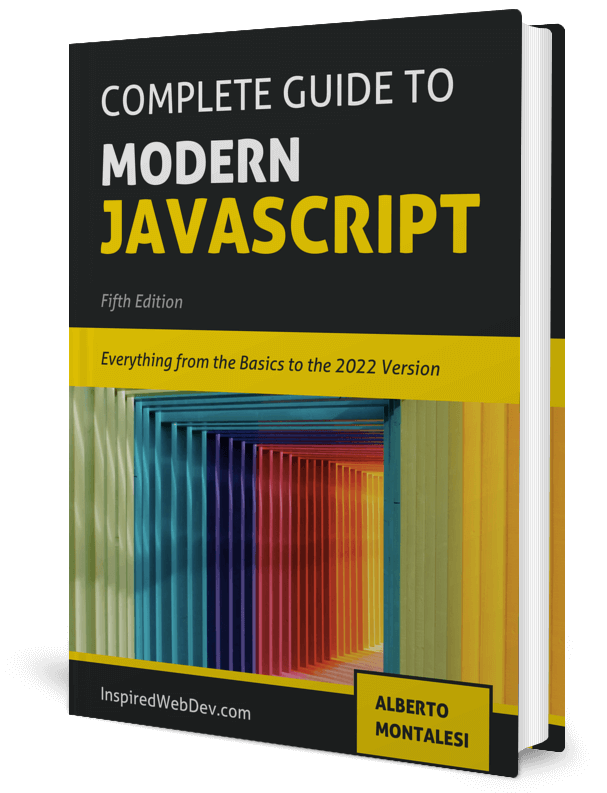Everything new coming in ES2021
Check out my Github for my free-to-read JavaScript Ebook that covers all the new features from ES6 to 2021. If you want find a great place for interactive tutorials, i recommend Educative where you can find my JavaScript course
This website contains affiliate links.
Every year since 2015, JavaScript has been receiving constant yearly updates to its specification with new interesting features added.
Despite the release of ES2021 still being far in the future, we can already have a look at what’s to come since many features already reached stage 4 and will be included in the specification.
For those of you who don’t know, there are 4 stages in the proposal process, with the 4th one being the last one which marks the proposal as finished.
As a developer, it’s important to stay updated with the new specs of a language and if you feel like you’ve been left behind by the many updates that JavaScript received in the past years, I can recommend you my book that covers everything from the basics of the language all the way to the latest ES2020 specs, including a little intro to TypeScript. You can read it for free on Github where you will also find links where to buy the ebook or you can check out my course on Educative
Now, let’s get started with the first of the new ES2021 features:
String.prototype.replaceAll
String.replace is a useful method that allows us to replace a pattern in a string with something else. The problem is that if we want to use a string as a pattern and not a RegEx, only the first occurrence will get replaced.
const str = 'I like my dog, my dog loves me'
const newStr = str.replace('dog', 'cat')
newStr
// "I like my cat, my dog loves me"
As the name implies, String.replaceAll will do exactly what we need in this scenario, replace all the matching pattern, allowing us to easily replace all mentions of a substring, without the use of RegEx:
const str = 'I like my dog, my dog loves me'
const newStr = str.replaceAll('dog', 'cat')
newStr
// "I like my cat, my cat loves me"
Promise.any
During the past years we’ve seen new methods such as Promise.all and Promise.race with ES6, Promise.allSettled last year with ES2020 and ES2021 will introduce a new one: Promise.any.
I bet you can already tell what it does from the name of the method.
Promise.any shorts-circuits once a given promise is fulfilled but will continue until all promises are rejected.
Don’t get confused with Promise.race because with race, the promise short-circuits once one of the given promises resolves or rejects.
They have similar behavior for what concerns fulfillment but very different for rejection.
If all the promises inside of Promise.any fails, it will throw an AggregateError (a subclass of Error) containing the rejection reasons of all the promises.
We can use it like this:
// example taken from: https://github.com/tc39/proposal-promise-any
Promise.any(promises).then(
(first) => {
// Any of the promises was fulfilled.
},
(error) => {
// All of the promises were rejected.
}
)
Logical Operators and Assignment Expressions
With ES2021 we will be able to combine Logical Operators (&&, || and ??) with Assignment Expression (=) similarly to how it’s already possible to do in Ruby.
If you skipped on ES2020 you may not be aware of ?? which is the nullish coalescing operator. Let’s look at an example:
const a = null ?? 'test' // 'test' const b = 0 ?? 'test' // 0
The nullish coalescing operator returns the right hand-side when the left-hand-side is null or undefined, otherwise it returns the left hand-side. In the first example the left-hand-side was null thus it returned the right-hand-side while on the second example it returned the left-hand-side because it was neither null nor undefined.
Moving back to ES2021 stuff, in JavaScript we already have many assignment opeartors like the following basic example:
let a = 0 a += 2 // 2
But with this new proposal we will be able to do the following:
a ||= b // equivalent to a = a || b c &&= d // equivalent to c = c && d e ??= f // equivalent to e = e ?? f
Let’s go over each one by one:
a ||= bwill returnaifais a truthy value, orbifais falsyc &&= dwill returndif bothcanddare truthy, orcotherwisee ??= fwill returnfifeisnullorundefinedotherwise it will returne
Numeric Separators
The introduction of Numeric Separators will make it easier to read numeric values by using the _ (underscore) character to provide a separation between groups of digits.
Let’s look at more examples:
x = 100_000 // 100 thousand dollar = 55_90 // 55 dollar 90 cents fraction = 0.000_1 // 1 thousandth
WeakRefs
From MDN: A weak reference to an object is a reference that does not prevent the object from being reclaimed by the garbage collector.
With this new proposal for ES2021, we will be able to create weak references to objects with the WeakRef class. Please follow the link below to read a more in-depth explanation.
Intl.ListFormat
The Intl.ListFormat object is a constructor for objects that enable language-sensitive list formatting.
Looking at an example is easier than explaining it:
const list = ['Apple', 'Orange', 'Banana']
new Intl.ListFormat('en-GB', { style: 'long', type: 'conjunction' }).format(
list
)
// Apple, Orange and Banana
new Intl.ListFormat('en-GB', { style: 'short', type: 'disjunction' }).format(
list
)
// Apple, Orange or Banana
You are not limited to English, let’s try with a few different languages:
const list = ['Apple', 'Orange', 'Banana']
// Italian
console.log(
new Intl.ListFormat('it', { style: 'long', type: 'conjunction' }).format(list)
)
// Apple, Orange e Banana
// Spanish
console.log(
new Intl.ListFormat('es', { style: 'long', type: 'conjunction' }).format(list)
)
// Apple, Orange y Banana
// German
console.log(
new Intl.ListFormat('de', { style: 'long', type: 'conjunction' }).format(list)
)
// Apple, Orange und Banana
Pretty neat uh? For a more detailed look at this specification check out the link below.
dateStyle and timeStyle options for Intl.DateTimeFormat
We can use dateStyle and timeStyle to request a locale-specific date and time of a given length.
// short
new Intl.DateTimeFormat('en', {
timeStyle: 'short',
}).format(Date.now())
// "2:45 PM"
// medium
new Intl.DateTimeFormat('en', {
timeStyle: 'medium',
}).format(Date.now())
// "2:45:53 PM"
// long
new Intl.DateTimeFormat('en', {
timeStyle: 'long',
}).format(Date.now())
// "2:46:05 PM GMT+7"
Now let’s try with dateStyle:
// short
new Intl.DateTimeFormat('en', {
dateStyle: 'short',
}).format(Date.now())
// "7/25/20"
// medium
new Intl.DateTimeFormat('en', {
dateStyle: 'medium',
}).format(Date.now())
// "Jul 25, 2020"
// long
new Intl.DateTimeFormat('en', {
dateStyle: 'long',
}).format(Date.now())
// "July 25, 2020"
You can pass whatever locale you want and you can also pass both dateStyle and timeStyle options at the same time, choosing between the three options of ‘short’, ‘medium’, and ‘long’ that best suit your needs.
What’s the feature you are most excited to try? Leave a comment down below, for me, it’s probably the combination of Logical Operators and Assignment Expressions, I love my syntax to be short and clean.
If you want to learn everything about JavaScript from ES6 all the way to ES2020, please check out my book available to read for free on Github. A course is also on Educative
Thank you very much for reading, if you enjoyed this article, please share it with friends and colleagues and if there is a topic you would like me to cover, reach out to me on twitter at @montalesi. Follow me on DevTo or on Twitter for more.



